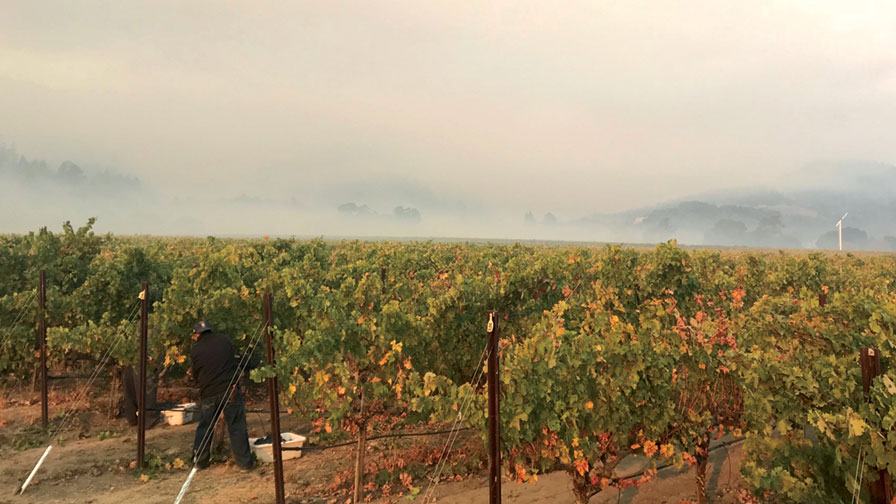What Growers Need to Know About the Western Fires

Smoke from wildfires near the Oakville Experimental Station is seen in the vineyard on Oct. 17, 2017. (Photos: Anita Oberholster)
The 2020 fire season came early this year, overlapping with intensive harvesting. While the western fires themselves remain primarily in the hills and generally aren’t intruding into farm fields, smoke and ash are another story.
EPA’s AirNow hosts the Fire and Smoke Map, which shows the air quality throughout much of the West Coast’s growing areas rank as either unhealthy, very unhealthy, or hazardous.
These rankings are based on the official air quality index (AQI), and anything from unhealthy or higher falls above the 151 AQI threshold that triggers California’s new wildfire smoke requirements.
What Can You Do to Protect Both Your Workers and Your Farm?
First, here are a few of the California regulations you need to know:
- “Section 5141.1 requires employers to determine employee exposure to PM2.5 for worksites covered by this section, before each shift and periodically thereafter as needed.”
- “To filter out fine particles, respirators must be labeled N-95, N-99, N-100, R-95, P-95, P-99, or P-100, and must be labeled as approved by the US National Institute for Occupational Safety and Health (NIOSH). Full face-piece respirators provide at least five times as much protection from fine particles as half face-piece respirators such as filtering face-piece respirators (dust masks).”
- “The employer must provide respirators for employee use on a voluntary basis when the current AQI for PM2.5 is equal to or greater than 150 but less than 500. The employer must require employees to use respirators when the current AQI for PM2.5 is greater than 500.”
Train Your Team on What’s in Wildfire Smoke.
Your fieldworkers may think they’re too tough to worry about smoke. They deal with agricultural chemicals on a regular basis, so why would smoke be any worse?
So you’ll need to educate them on the fine particulates they can breath in if they do not wear masks. Smoke carries more than gasses, it also carries fine particulates that damage lungs.
These fires are burning more than forests — they’re also consuming cars, homes, machinery, plastics and spewing those into the air.
Pacific Standard has a good article describing the hazards of wildfire smoke.
Prepare for the Fire Reaching Your Farm
Although most of the fires have remained in the hills and mountains, some have burned farms. GrowingProduce.com reached out to MAS Labor’s Kerry Scott, asking what he advice he has for H-2A growers. His tips apply to all growers, however:
- Maintain situational awareness.
- Have your team wear natural fibers, not synthetics. If you get too close to fire in synthetics, they can melt into your skin.
- Identify escape routes and make sure your team leaders know which ones are closest to them during each shift.










